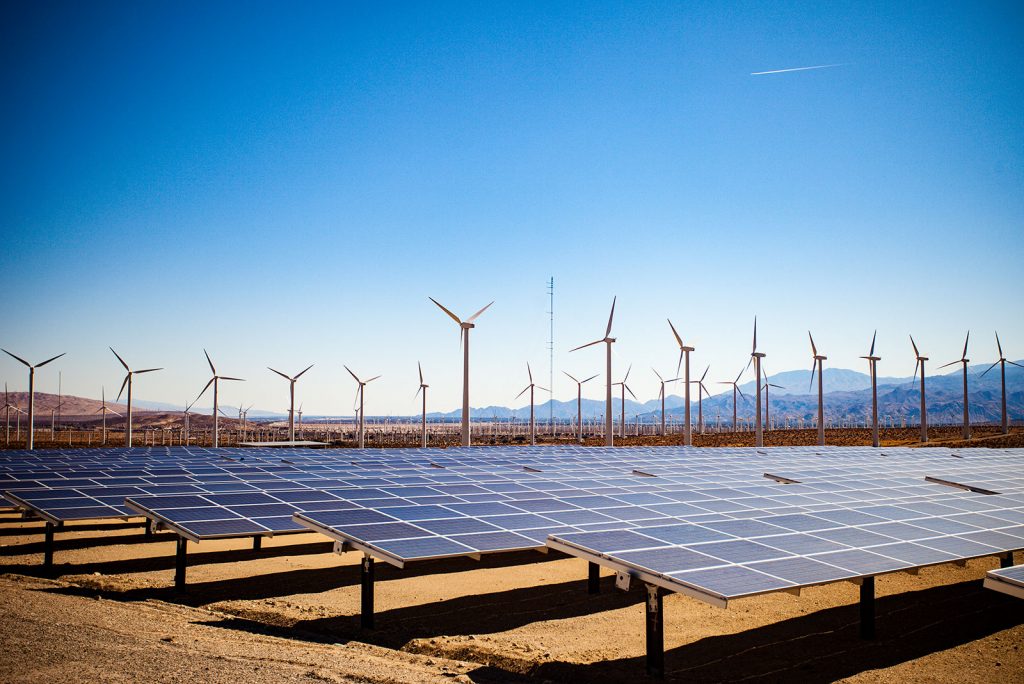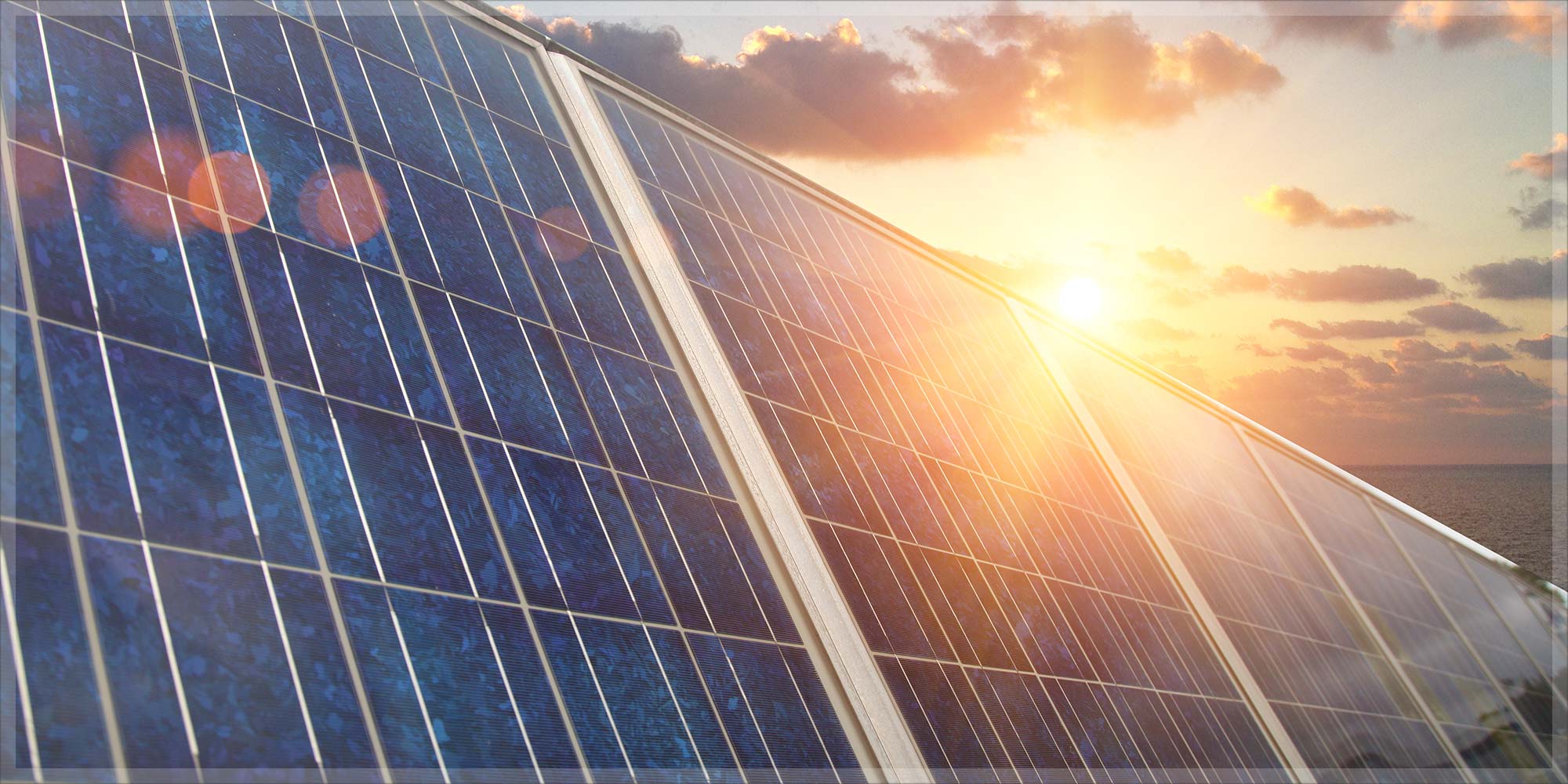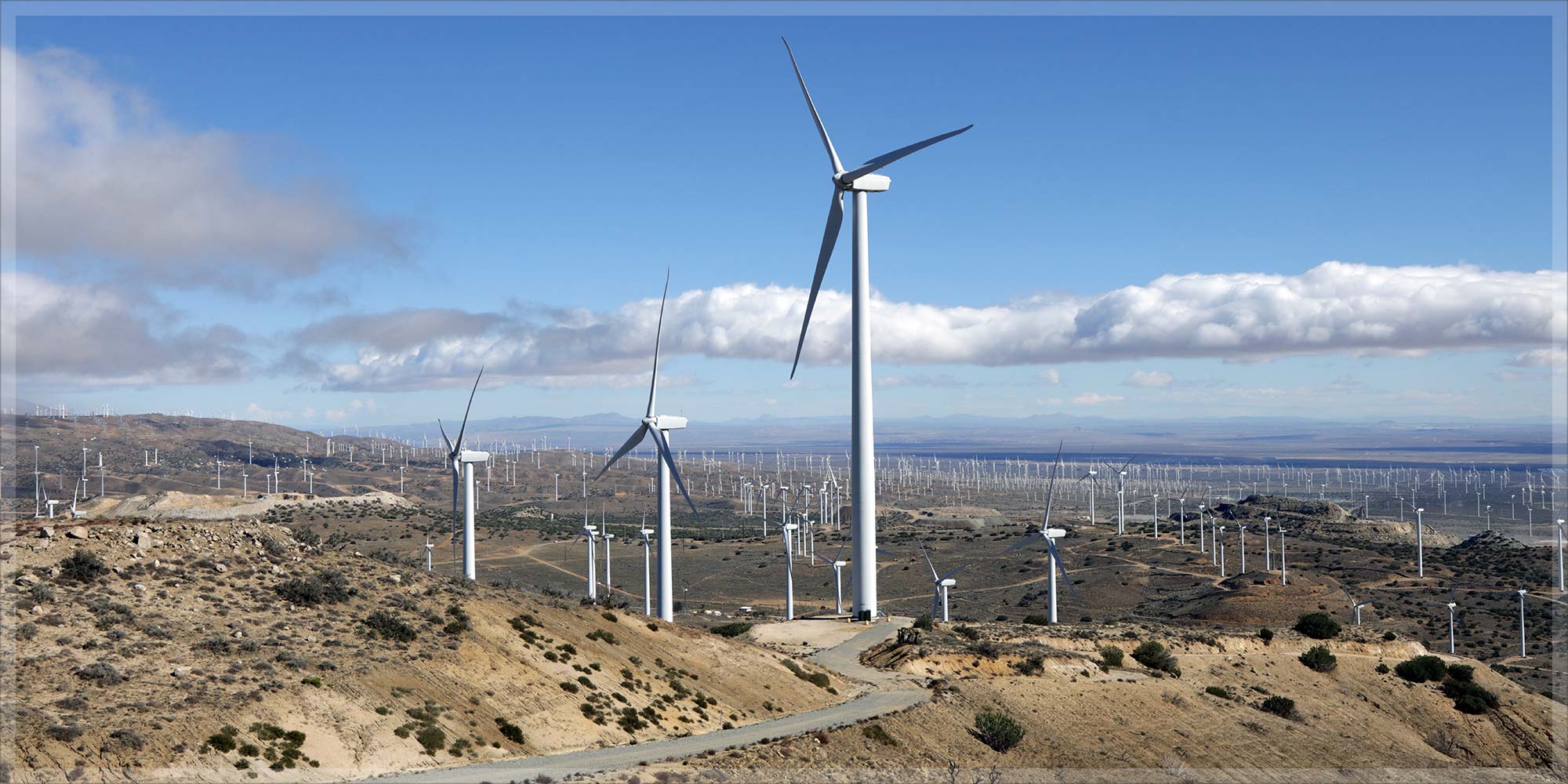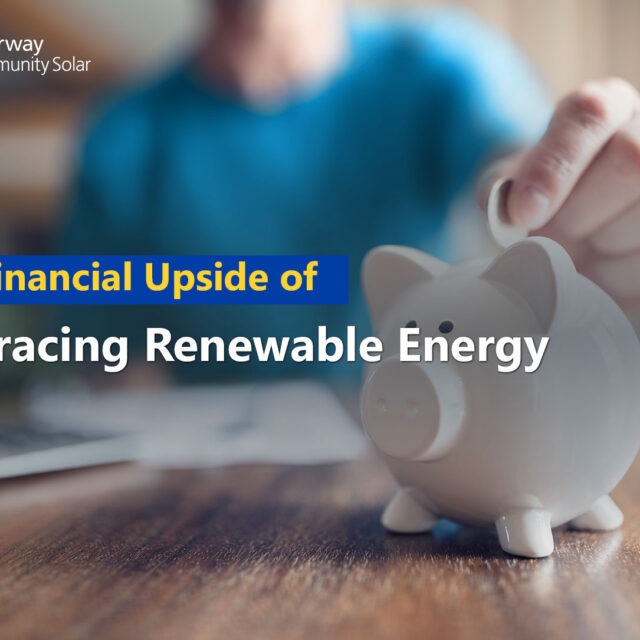
If you’re considering ways to support clean, renewable energy, you’re likely hearing a lot about solar power and wind power. And that might bring you to wonder, how does solar power even work? How does wind power make an impact? And which of the renewable power resources is most convenient for me? The answers are exciting. Solar energy and wind energy are profound accomplishments in engineering and environmental science, and have re-shaped how we source energy. Let’s take a look at these two clean power options.
Did you know that wind energy is actually impacted by the sun?
The air movement that we know as wind is caused by the uneven heating of the earth’s surfaces — by the sun! In general, the air above land heats up faster than the air above water. During the day, the warm air above land expands and rises. Then, the cooler, heavier air above water moves in to take its place. This very air movement is what creates wind.[1,2]
How does solar energy work?
Solar energy derives from solar panels that convert sunlight into electricity. Solar panels contain solar photovoltaic devices that actually convert sunlight into electricity. When many of these panels are put together, they can produce enough electricity for a single home and larger communities. Solar panels can be installed on the roofs of homes, businesses, and other buildings. That isn’t always easy – solar panel installation includes significant upfront costs, ongoing maintenance, and not every roof is qualified to get optimal sunlight.

What about wind energy?
Wind energy, on the other hand, is generated by wind turbines, which look like the propellers of a plane, or the blades of a fan. But, compared to a fan, a wind turbine works in the exact opposite way. Instead of using electricity to turn the blades of a fan, a wind turbine uses wind to turn its blades, which then spins a shaft connected to a generator to create electricity.
Wind turbines range in size and can be installed to power individual homes or grouped together as a “wind farm” to produce bulk electricity for utility companies.[1]

How does solar energy compare to wind energy?
For both clean energy sources, location is key to success. Solar panels or solar shingles need to be installed where there is direct sun exposure, and wind turbines need access to ample wind supply. In the case of rooftop solar, the direction of a rooftop, as well as neighborhood shading, might disqualify a home from participation. But there’s a light (sunlight that is) at the end of the tunnel. Solar farms, or large banks of solar panels on a dedicated piece of land, are on the rise. These farms generate power for utility companies through the participation of local individuals, in the form of community solar. Clearway Community Solar, for example, builds and operates the solar farms, ensuring proper placement and keeping the panels in peak condition no matter the weather. The farms’ location is determined through comprehensive planning from the land size and quality, proximity to the local power grid, and local weather factors to ensure appropriate placement.
Unlike solar panels, which require the sun to be on duty, wind turbines work any time, day or night, but they do need to be placed high on a tower (average height is 80 feet) above any obstacles that can block the wind. Wind turbines also need wind speeds of at least 12 miles an hour to generate power. In general, this means wind turbines may be better suited to rural areas or, on mountains, with wide open space and fewer obstructions.[4]
So how exactly do wind energy and solar energy compare for residential use? Some years ago, Inland Power and Light Co., a utility company in Spokane, Washington, decided to find out. Each year, the company got calls from customers wanting to know which option would produce more electricity. So the company set up an experiment with a 35-foot wind turbine and a set of solar panels, sized for home use. After 14 months, the solar panels produced 5 times more electricity than the wind turbine. In Spokane, inconsistent wind patterns affected the power generation of the wind turbine more than the short, cloudy winter days affected the solar panels.[5] So, no matter the season, solar panel generation is powerful and effective.
To help you better understand the unique elements of solar and wind power, we put together this quick snapshot:[1,2,5,6]
Solar Energy
- Reduces dependence on fossil fuels
- Provides more predictable energy output, no matter the season or cloudy weather
- Location to sunlight access is required
- Generation only possible during the daytime
- Rooftop solar is one option, but a home’s rooftop may not be eligible due to too much shade; costs and maintenance may also be an obstacle
- Community solar provides an option to support local solar energy generation and clean energy output in your community without having to put solar panels on your roof; plus you’ll receive solar credits on your utility bill for your share of the energy produced
Wind Energy
- Reduces dependence on fossil fuels
- Highly dependent on consistent wind patterns
- Location with open space and higher elevation is required
- Generation possible day or night
- Typically placed far away from population centers
The good news for both solar and wind power? Both are scientific accomplishments that keep improving and evolving and going solar is more convenient than it has been in the past with community solar. And both are paving the way to a more sustainable future.
[1]Wind Energy Development Programmatic EIS. Wind energy basics. Retrieved November 18, 2017 from https://windeis.anl.gov/guide/basics/
[2]Wind Energy Foundation. What is wind energy? Retrieved November 18, 2017 from https://windenergyfoundation.org/what-is-wind-energy/
[3]National Renewable Energy Laboratory. Solar photovoltaic technology basics. Retrieved November 18, 2017 from https://www.nrel.gov/research/re-photovoltaics.html
[4]Wind Energy Foundation. Wind power your home. Retrieved November 18, 2017 from https://windenergyfoundation.org/wind-at-work/wind-consumers/wind-power-your-home/
[5]The Spokesman Review. Kramer, Becky. Solar takes wind in test. Retrieved November 19, 2017 from https://www.spokesman.com/stories/2011/jan/19/solar-takes-wind-in-test/#/0
[6]Green Future. Wind vs. solar—which power source is better? Retrieved November 18, 2017 from https://greenfuture.io/solar/wind-vs-solar-energy/









